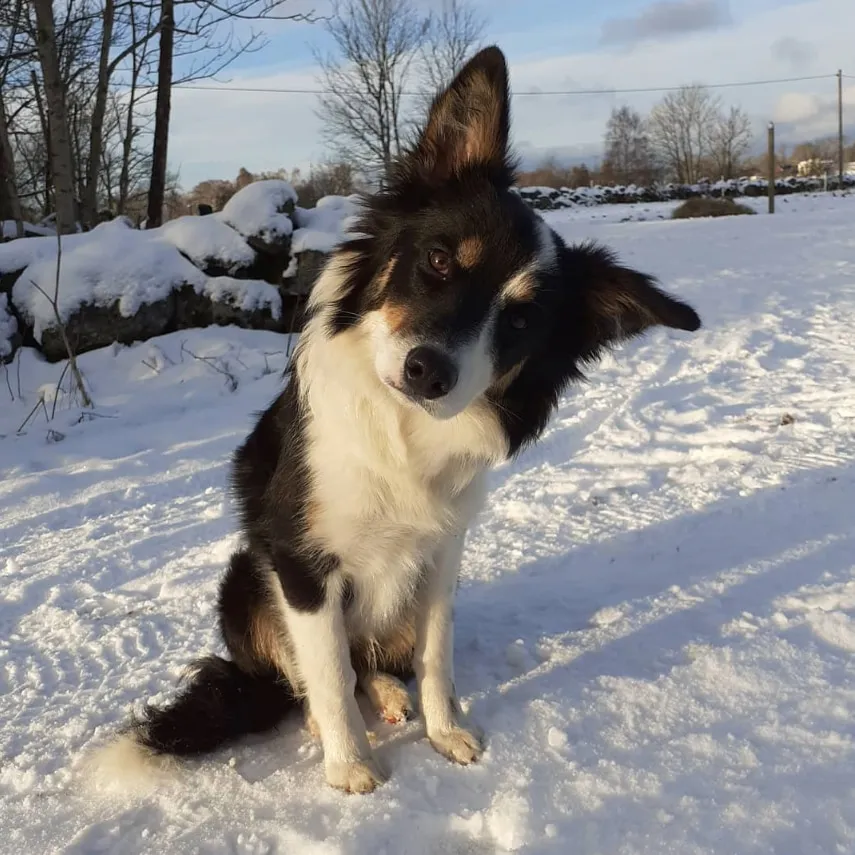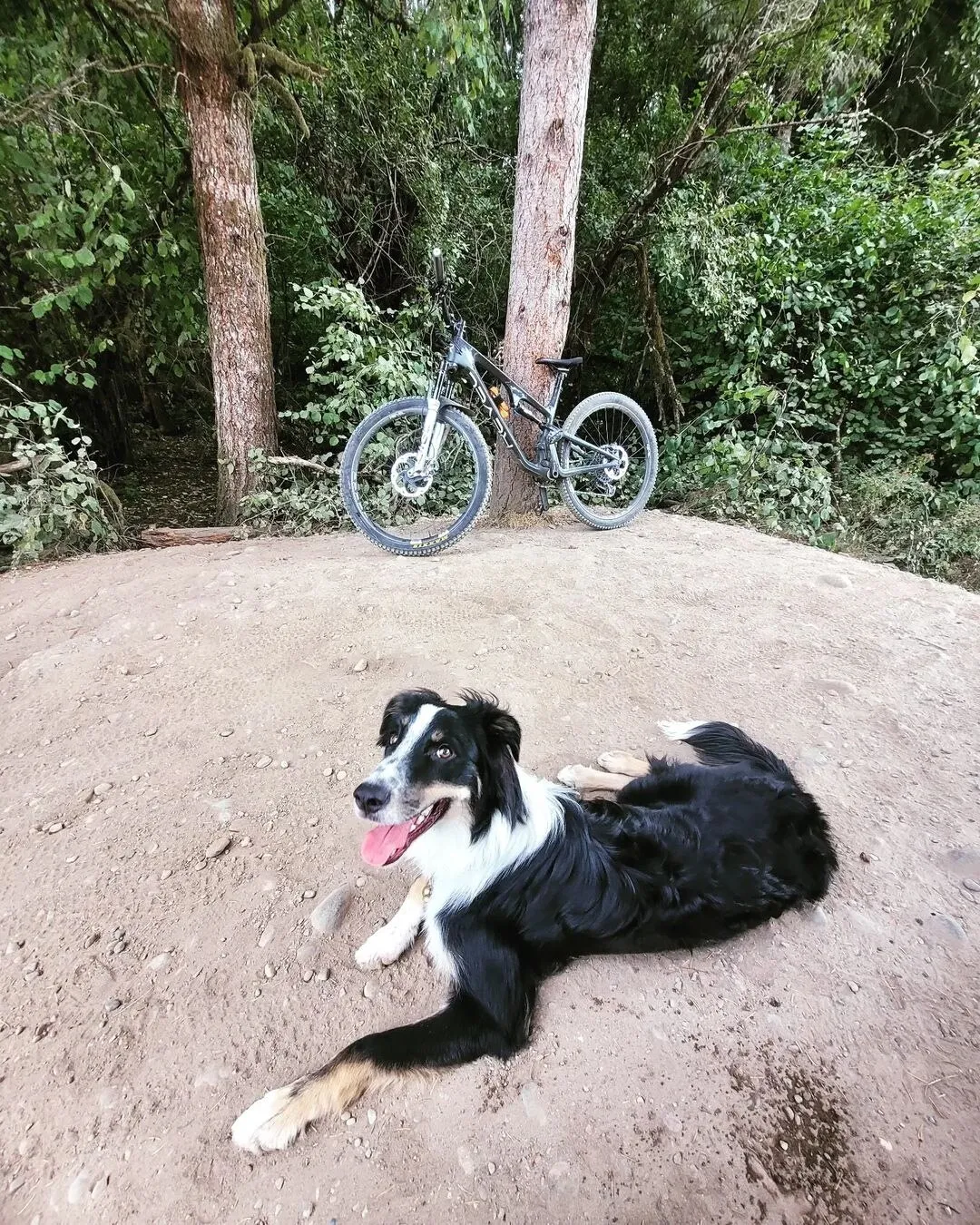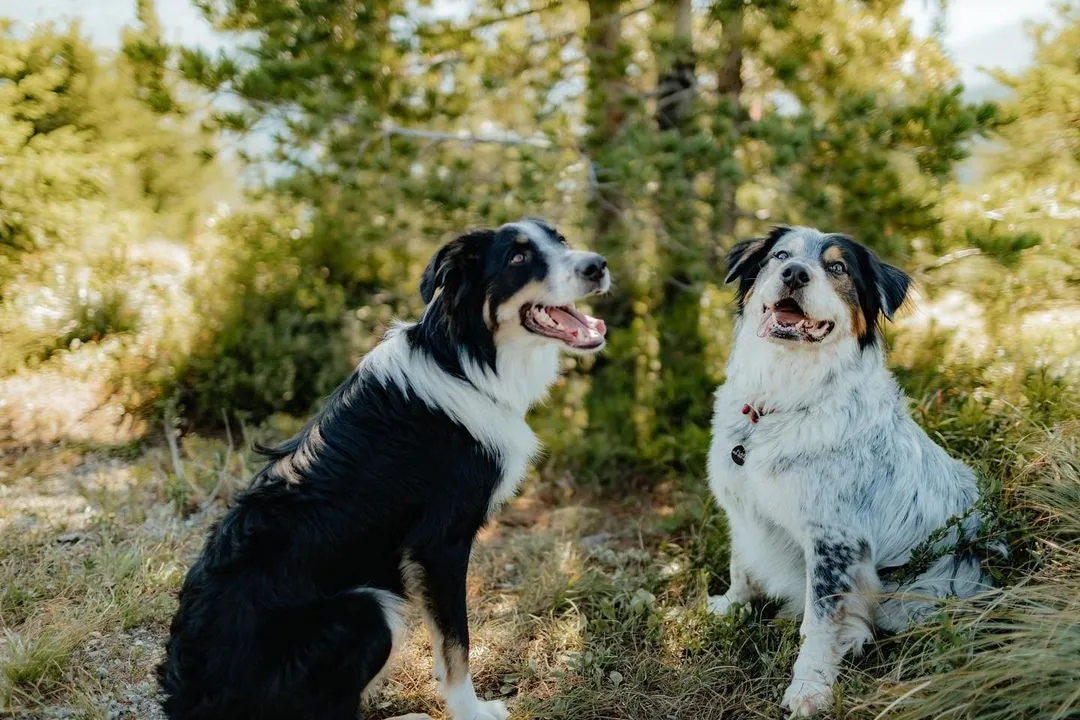The Border Aussie, a dynamic crossbreed, is the offspring of two highly regarded herding dogs: the Border Collie and the Australian Shepherd. While a relatively recent mix, leading to variations in both appearance and temperament, understanding the parent breeds offers significant insight into what to expect from this unique canine companion. Both Border Collies and Australian Shepherds are renowned for their high energy levels and exceptional intelligence. When these two breeds combine, the resulting Border Collie-Australian Shepherd mix typically produces a medium-sized dog, usually weighing between 30–65 pounds, brimming with intellect, eagerness to please, and boundless energy. These dogs possess strong working instincts, necessitating healthy outlets for their considerable skills and stamina.
Understanding their heritage as shepherd dog breeds [cite:list of all shepherd dog breeds] is crucial for any potential owner. This mix isn’t just a pet; it’s a dog with a purpose, eager to engage both mind and body. Their impressive lineage means a Border Aussie will thrive when given consistent training, ample exercise, and a clear role within the family unit. Without these essentials, their innate herding drive and intelligence can lead to unwanted behaviors.
Caring for a Border Aussie
Providing optimal care for a Border Aussie revolves around acknowledging their strong herding genetics. Descended from two breeds often described as workaholics, Border Aussies require a “job” that offers intense physical and mental stimulation. For a family pet, this translates to one to two hours of dedicated daily activity. This could involve structured playtime, training sessions, or engaging in dog sports.
Border Aussies are generally good-natured and can integrate well with people of all ages and other pets, provided they receive adequate socialization and training from an early age. Without proper guidance and sufficient outlets for their mental and physical energy, their inherent instincts might lead them to herd other animals or even children within the home. They can also exhibit reserved behavior around strangers and may be prone to excessive barking if not managed appropriately. Consistent, positive reinforcement training is key to shaping a well-adjusted Border Aussie.
Unlike some breeds, Border Aussies are relatively low-maintenance when it comes to grooming. Their thick, weather-resistant double coat typically requires brushing only once or twice a week. However, during shedding seasons in spring and fall, you may need to increase your grooming efforts to manage the increased fur.
Border Aussie Health Issues
Both Border Collies and Australian Shepherds are generally healthy breeds, boasting life expectancies of 12–15 years. Consequently, a Border Aussie’s lifespan is expected to fall within this range. However, like all dog breeds, both parent breeds are predisposed to certain health conditions that can be passed down to their Border Aussie puppies. Awareness of these potential issues is vital for proactive care and early intervention.
 tricolor border aussie sitting in snow with her head tilted and one ear perked upA Border Aussie’s vibrant spirit is best supported by a proactive approach to health. Regular veterinary check-ups and a keen eye for any changes in behavior or physical condition are essential.
tricolor border aussie sitting in snow with her head tilted and one ear perked upA Border Aussie’s vibrant spirit is best supported by a proactive approach to health. Regular veterinary check-ups and a keen eye for any changes in behavior or physical condition are essential.
Hip Dysplasia
Hip dysplasia is a condition characterized by improper development of the hip joint, leading to looseness and eventually degenerative joint disease, also known as osteoarthritis. Mild cases can often be managed with interventions such as physical therapy and anti-inflammatory medications. However, more severe instances may necessitate surgical intervention to improve the dog’s quality of life.
Common indicators of hip dysplasia include:
- Limping or lameness
- Reluctance to stand up, jump, or climb stairs
- Shifting of weight predominantly to the front legs
- Noticeable loss of muscle mass in the hind legs
- Visible signs of hip pain or discomfort
Early detection and management are crucial for dogs prone to this condition. Regular consultations with a veterinarian can help monitor joint health, especially as your Border Aussie ages.
Progressive Retinal Atrophy (PRA)
Progressive Retinal Atrophy (PRA) encompasses a group of inherited eye disorders where the rods and cones of the retina progressively deteriorate. The onset and progression of PRA can vary, but it invariably leads to blindness.
Signs of PRA may include:
- Hesitancy or reluctance to enter dimly lit or dark environments
- Increased clumsiness, particularly in unfamiliar surroundings
- Dilated pupils that constrict slowly or minimally in response to light
- Eyes that appear more reflective or “glowing” in the dark
- Development of cataracts, which can further obscure vision
Currently, there is no cure for PRA, and the condition ultimately results in complete blindness. Despite this, blind dogs can still lead full and happy lives with the support of dedicated pet parents who make necessary adjustments to their environment and routine.
Deafness
Dogs with merle and white coat patterns, often seen in Australian Shepherds and sometimes in Border Collies, have a higher genetic predisposition to a malformation of the cochlea in the ear, which can result in deafness. This condition can affect one or both ears. While permanent, hearing-impaired dogs can adapt remarkably well with specific training methods and environmental adjustments, enabling them to lead long, joyful lives. Owners should be aware of this possibility and consider hearing tests for puppies from at-risk lineages.
Epilepsy
Epilepsy is a neurological condition characterized by recurrent seizures that occur without an identifiable underlying cause. Epileptic seizures typically last one to two minutes, and symptoms can include loss of consciousness, uncontrolled spastic muscle movements, involuntary urination, and defecation. This condition requires lifelong medication to manage the frequency and severity of seizures, ensuring the dog’s safety and comfort. A veterinarian can help determine the appropriate medication and dosage.
Multidrug Resistant Mutation (MDR1)
Dogs carrying the Multidrug Resistance 1 (MDR1) gene mutation are at significant risk of severe, and potentially life-threatening, complications if they receive specific doses of certain medications. This genetic variant impairs the body’s ability to pump drugs and toxins out of the brain, leading to their dangerous accumulation.
Dogs with this mutation are notably more sensitive to ivermectin, though it’s important to note that FDA-approved heartworm prevention products typically use doses well below those known to affect sensitive dogs. Owners of Border Aussies should always inform their veterinarian about the breed mix, and genetic testing for the MDR1 mutation is highly recommended to prevent adverse drug reactions.
Signs of drug toxicity associated with MDR1 sensitivity include:
- Vomiting
- General weakness or lethargy
- Uncoordinated movement (ataxia)
- Tremors or muscle twitching
- Seizures
- Blindness
- In severe cases, death
What To Feed a Border Aussie
Establishing a feeding plan for your Border Aussie is not a one-size-fits-all endeavor. It’s essential to collaborate with your veterinarian to create a diet that is nutritionally complete and balanced, tailored specifically to your dog’s age, current weight, activity level, and any specific health considerations.
Given that Border Collie-Australian Shepherd mixes are inherently athletic and possess high energy levels, they may benefit significantly from a performance-formulated dog food. It is crucial to select food appropriate for their life stage: Border Aussie puppies require puppy-specific formulations, adults should consume adult dog food, and senior Border Aussies can benefit from specialized senior dog food formulas.
Always consult with your veterinarian to determine the most suitable food choice for your individual pup, taking into account their unique needs.
How To Feed a Border Aussie
Most adult dogs typically thrive on two meals a day, ideally spaced approximately 12 hours apart, such as in the morning and evening. However, Border Aussie puppies, due to their higher metabolism and rapid growth, generally benefit from an additional midday feeding, totaling three meals per day. Your veterinarian is the best resource to help you establish the optimal feeding schedule that aligns with your dog’s age and developmental stage.
Given the Border Aussie’s strong need for mental stimulation, consider incorporating interactive games or puzzle feeders into their meal times. This approach not only makes eating more engaging but also provides valuable mental enrichment, tapping into their natural problem-solving abilities.
How Much Should You Feed a Border Aussie?
While the nutrition label on your dog’s food bag provides a general feeding guide based on weight, it serves only as a starting point. For a more precise recommendation on portion sizes, working closely with your veterinarian is invaluable. Your vet will customize their advice, considering your Border Aussie’s age, weight, individual body condition score, lifestyle, and any specific health requirements. This personalized approach ensures your dog receives the exact amount of nutrients needed to thrive without over or under-feeding.
It’s also important to remember that treats, while useful for training and bonding, should never constitute more than 10% of your dog’s total daily calorie intake. Over-reliance on treats can quickly lead to an imbalanced diet and weight gain.
Nutritional Tips for Border Aussies
If your Border Aussie is consuming a complete and balanced diet consisting of dog food approved by the Association of American Feed Control Officials (AAFCO), they generally should not require additional nutritional supplementation. AAFCO-approved foods are formulated to meet the dietary needs for a specific life stage.
However, in certain circumstances, nutritional supplements or even prescription diets might be recommended by your veterinarian to address or prevent specific health conditions. Always engage in a thorough discussion with your veterinary team before introducing any new supplement or making significant changes to your dog’s diet. Their expertise ensures that any dietary modifications are beneficial and safe for your Border Aussie.
Behavior and Training Tips for Border Aussies
 tricolor border aussie with freckles lying down by a mountain bikeA Border Aussie’s focused gaze often signals their readiness for action and mental challenges. Understanding their keen senses is key to effective training and enrichment.
tricolor border aussie with freckles lying down by a mountain bikeA Border Aussie’s focused gaze often signals their readiness for action and mental challenges. Understanding their keen senses is key to effective training and enrichment.
Border Aussie Personality and Temperament
Border Aussies inherit a tenacious work ethic deeply ingrained in their genetic makeup. For those living as family pets rather than full-time working dogs, providing significant amounts—one to two hours daily—of mental and physical exercise is absolutely crucial. These highly intelligent dogs need a purpose and consistent engagement to prevent boredom and destructive behaviors.
Loyal and generally good-natured, properly socialized Border Aussies can coexist harmoniously with people of all ages and other household pets. However, without consistent training or adequate stimulation, their powerful herding instincts can manifest, often directed towards other animals or even children in the home. They can also be reserved and take time to warm up to new people or unfamiliar situations. Despite their need for vigorous activity, Border Aussies are often affectionate and enjoy cuddling once their exercise requirements have been met, showcasing a wonderful balance between an active spirit and a loving companion.
Border Aussie Behavior
As descendants of working dogs, Border Aussies have pronounced needs for both activity and attention. A bored Border Aussie with excess energy is highly prone to engaging in undesirable behaviors such as obsessive herding, destructive chewing, and excessive barking. Furthermore, being left alone for extended periods can often lead to the development of separation anxiety, a common issue for intelligent and bond-oriented breeds.
Australian Shepherds, one of the parent breeds, have earned a reputation as escape artists. They may bolt at the sight of anything that catches their eye, from small animals like squirrels to moving vehicles. Due to this strong chasing instinct, all outdoor exercise and activities for a Border Aussie should strictly occur on a leash or within a securely fenced area to ensure their safety and prevent them from wandering off.
Border Aussie Training
It is profoundly important to safely expose your Border Aussie puppy to a wide array of animals, people, environments, activities, and objects during their critical socialization period, typically within the first 16 weeks of life. Socializing your pup during this crucial learning phase helps them develop confidence and feel comfortable in a variety of settings and around different individuals. Consult your veterinarian for guidance on age-appropriate socialization activities that are safe and effective for your young pup.
Border Aussies thrive on consistent, lifelong training; you would be hard-pressed to find a more eager and willing pupil. The training process itself serves as a vital source of the mental and physical exercise these smart, sporty dogs need to flourish. As with all dogs, Border Aussies respond most effectively to positive, rewards-based training methods, which foster a strong bond and build confidence.
If you choose to use treats as a reward during training sessions, be sure to factor these calories into your dog’s daily intake to prevent unwanted weight gain. Alternatively, play, favorite toys, or enthusiastic praise can also serve as powerful and healthy rewards that won’t contribute to obesity.
Fun Activities for Border Aussies
Engaging a Border Aussie in a variety of activities is key to their well-being and happiness. Their intelligence and athleticism make them excellent candidates for numerous dog sports and interactive games. Some highly recommended activities include:
- Walking: Regular, brisk walks are a foundation for their exercise routine.
- Hiking: Offers varied terrain and sensory stimulation, ideal for their adventurous spirit.
- Jogging: A great way to burn off energy for both dog and owner.
- Agility: A challenging sport that combines physical prowess with mental focus.
- Herding: For those with access to livestock, this taps into their deepest instincts.
- Tracking: Utilizes their keen sense of smell, providing excellent mental engagement.
- Flying Disc (Frisbee): Perfect for their speed, agility, and love of retrieving.
- Flyball: A team relay race that combines obstacles and retrieves.
- Obedience Training: Reinforces good manners and mental discipline.
- Skills Training: Learning new tricks and commands keeps their minds sharp.
These activities not only provide the necessary physical exertion but also offer crucial mental stimulation, preventing boredom and channeling their energy constructively.
Border Aussie Grooming Guide
 two border aussie dogs sitting on a hiking trail and pantingA pair of Border Aussies enjoying a hike, highlighting their endurance and outdoor enthusiasm. Their coats, while weather-resistant, benefit from regular care after such adventures.
two border aussie dogs sitting on a hiking trail and pantingA pair of Border Aussies enjoying a hike, highlighting their endurance and outdoor enthusiasm. Their coats, while weather-resistant, benefit from regular care after such adventures.
The Border Aussie’s weather-resistant double coat is relatively low-effort to keep clean on a day-to-day basis, but you should prepare to keep a lint roller handy. They are seasonal shedders, meaning you should anticipate dealing with a significant increase in loose fur during the spring and fall months.
Skin Care
Good coat care is intrinsically linked to healthy skin. Regular grooming, especially brushing, plays a vital role in removing sticks, burrs, and other debris that can become trapped in the Border Aussie’s dense coat, leading to skin irritation or matting. Consult your veterinarian regarding the appropriate frequency for bathing your Border Aussie, keeping in mind that excessive bathing can strip the skin of its natural, healthy oils, potentially leading to dryness and irritation.
Given their high energy levels and propensity for outdoor activities, it is crucial to regularly check your Border Aussie’s skin for ticks after outdoor excursions. Additionally, ensure they are consistently up-to-date on veterinarian-approved flea and tick preventatives year-round to protect against parasites and the diseases they carry.
Coat Care
Border Aussies generally require brushing once or twice a week to maintain a healthy coat, prevent mats, and manage their moderate shedding. However, during the heavier shedding periods in spring and fall, you will likely need to increase your brushing frequency to several times a week to keep the excess fur under control and prevent it from accumulating throughout your home. Regular brushing also helps distribute natural oils, promoting a healthy, shiny coat.
Eye Care
Both parent breeds of the Border Aussie are known to be prone to various eye issues. It is important to diligently monitor your dog’s eyes and promptly notify your veterinarian if you observe any unusual discharge, signs of irritation such as redness or excessive blinking, or any cloudiness in their eyes. Early detection and intervention can be crucial for preserving their vision and overall eye health.
Ear Care
Engage in a conversation with your veterinary team to learn the correct technique for cleaning your dog’s ears and to establish an appropriate cleaning schedule. Be vigilant for any signs of an ear infection, which can include redness, a foul odor, pain when the ear is touched, excessive itchiness, or frequent head shaking. Always use a veterinary-approved ear cleaner, as human products or incorrect solutions can cause harm or irritation to your dog’s sensitive ear canals.
Considerations for Pet Parents
 border aussie dog with a huge stick in her mouthA Border Aussie enthusiastically carrying a large stick, a testament to their strength and playful nature, but also a reminder of their high energy needs.
border aussie dog with a huge stick in her mouthA Border Aussie enthusiastically carrying a large stick, a testament to their strength and playful nature, but also a reminder of their high energy needs.
Before welcoming a Border Collie Australian Shepherd mix into your family, it’s essential to honestly assess your lifestyle and resources. Here are some critical questions to consider:
- Do I have the time and sustained energy to commit to exercising a highly energetic dog for at least one to two hours every single day?
- Am I prepared to dedicate the necessary time to properly socialize a Border Aussie puppy so they can thrive as a well-adjusted family pet?
- Do I possess the skills, patience, and unwavering dedication to consistently train a dog using positive reinforcement methods throughout their life?
- Will I be home enough to provide a Border Aussie with the companionship and attention they crave, preventing separation anxiety?
- Am I financially capable and prepared to cover the costs of veterinary care, including preventative measures, potential health issues, and emergency situations?
- Can I commit to providing a loving, stable home for the entirety of their lifetime, which could easily extend to 15 years or even more?
If you can confidently and enthusiastically answer “Yes!” to each of these questions, then you may indeed be well-prepared and ready to welcome a Border Aussie into your life.
Border Aussie FAQs
Are Border Aussies good dogs?
Border Aussies can be exceptional dogs, particularly well-suited for families who have ample time and energy to provide them with one to two hours of engaging exercise every day, and who are typically home for a significant portion of the day to offer companionship and mental stimulation.
How big does a Border Aussie get?
Border Aussies are a medium-sized breed. Their parent breeds, Border Collies, typically weigh between 30–55 pounds, while Australian Shepherds can range from 40–65 pounds. Therefore, you can reasonably expect your Border Aussie to reach a maximum weight of approximately 65 pounds as an adult.
Are Border Aussies smart?
Yes, Border Aussies are incredibly intelligent dogs. Their Border Collie parent is frequently cited as one of, if not the, most intelligent dog breed, a trait that is strongly inherited by the Border Aussie mix.
